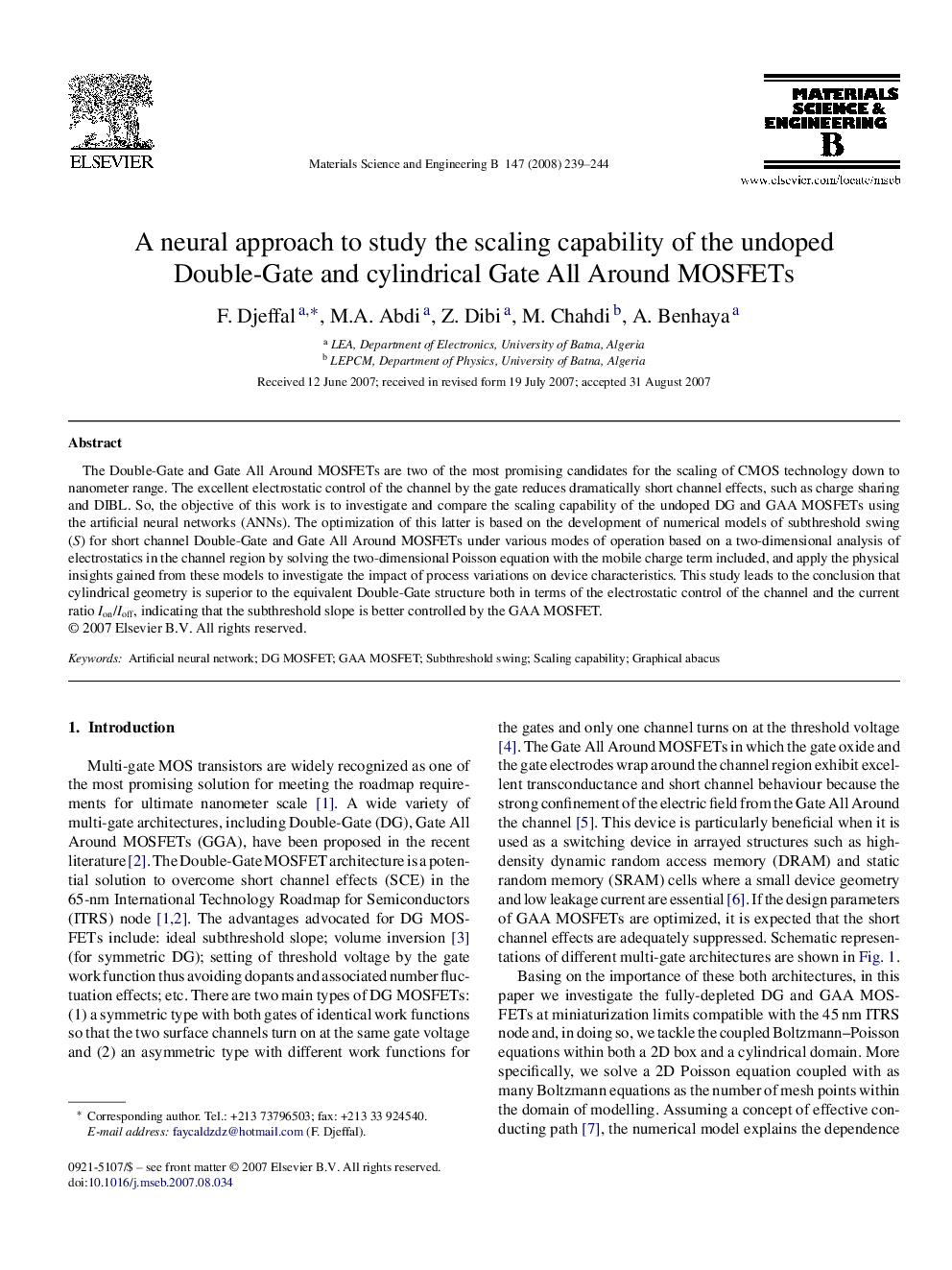| Article ID | Journal | Published Year | Pages | File Type |
|---|---|---|---|---|
| 1531359 | Materials Science and Engineering: B | 2008 | 6 Pages |
Abstract
The Double-Gate and Gate All Around MOSFETs are two of the most promising candidates for the scaling of CMOS technology down to nanometer range. The excellent electrostatic control of the channel by the gate reduces dramatically short channel effects, such as charge sharing and DIBL. So, the objective of this work is to investigate and compare the scaling capability of the undoped DG and GAA MOSFETs using the artificial neural networks (ANNs). The optimization of this latter is based on the development of numerical models of subthreshold swing (S) for short channel Double-Gate and Gate All Around MOSFETs under various modes of operation based on a two-dimensional analysis of electrostatics in the channel region by solving the two-dimensional Poisson equation with the mobile charge term included, and apply the physical insights gained from these models to investigate the impact of process variations on device characteristics. This study leads to the conclusion that cylindrical geometry is superior to the equivalent Double-Gate structure both in terms of the electrostatic control of the channel and the current ratio Ion/Ioff, indicating that the subthreshold slope is better controlled by the GAA MOSFET.
Related Topics
Physical Sciences and Engineering
Materials Science
Electronic, Optical and Magnetic Materials
Authors
F. Djeffal, M.A. Abdi, Z. Dibi, M. Chahdi, A. Benhaya,
